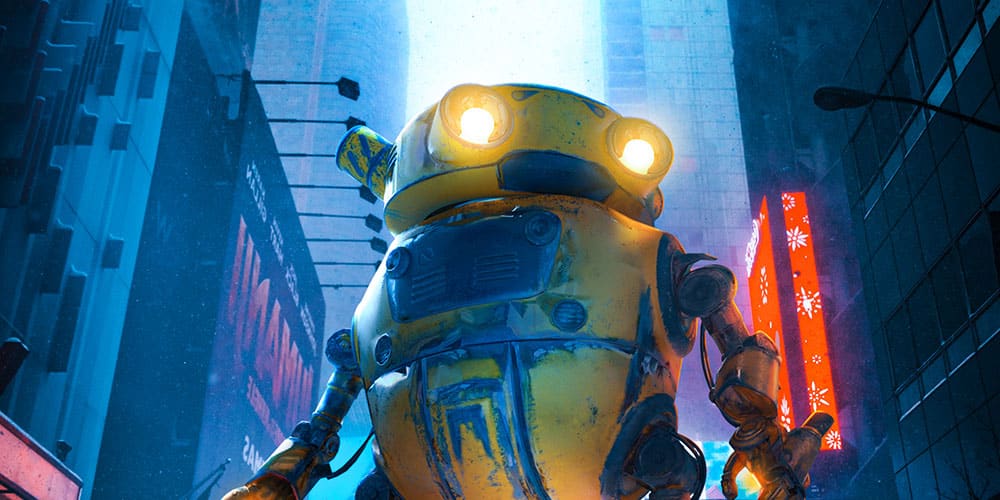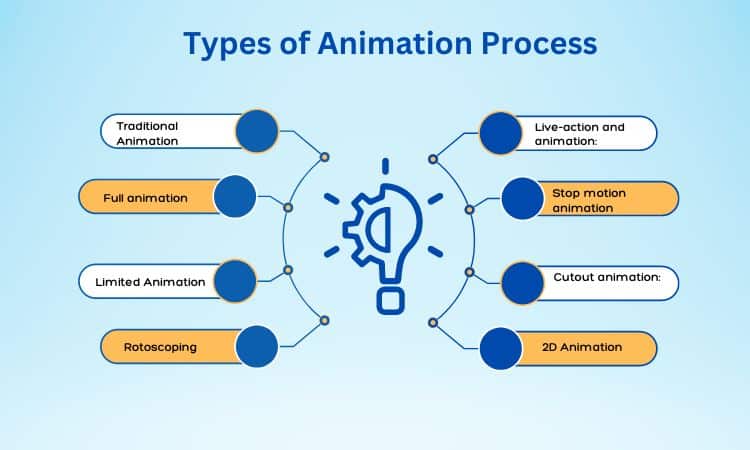
Introduction to Animation
Table of Contents
What does animation mean?
To understand the true meaning of animation, one must first know the origin of the word and its history. The term “Animation” is derived from the Latin words “Animō” and “Animatio.”
Animō means:
To quicken, live, breathe, or inspire.
Animatio refers to:
A form of life, the act of giving life, or to vitalize.
Inanimate: Lifeless, not moving.
Thus, ‘Animation’ refers to the act of giving life to inanimate objects”. It is a technique of making inanimate objects and drawings appear to move by breathing life into a movement where once, there was none. When drawings and images of inanimate characters or objects known as “frames” get rapidly displayed in a sequence, each of which is slightly different from the other, it gives us an illusion of movement and the drawings appear to have been brought to life.
The Illusion of movement:
The art of animation has evolved since its debut in 1910. Today’s animated films and cartoons are the product of refined processes throughout the years. And yet, not everything is purely a result of technique and science. The illusion of movement that we see through animation is the result of an optical illusion called the “Phi Phenomenon.”
Phi Phenomenon:
When two objects are seen one after another in quick succession, it creates a feeling that the same object is moving from one place to another.
The optical illusion of perceiving continuous motion between separate objects or images when viewed rapidly in succession is known as the Phi phenomenon. This along with the persistence of vision is a part of a larger process called the “Motion Perception.” Persistence of vision is also commonly mistaken as the real reason behind the illusion of movement, which is not true. Persistence of vision is the theory that an image is assumed to persist for approximately one twenty-fifth of a second on the retina. This makes us assume the black spaces between each “real” movie frame.
So why is it called animation and not just a video?
Well, there is a difference between animation and videos. Video is a continuous motion and breaks it up into discrete frames whereas animation starts with an independent picture which is put together as frames through a process. This is to form the illusion of continuous motion. There is a slight variation in each image, which when played rapidly results in the illusion of movement and a sequence is created.
Animators:
As stated earlier, animation is a rapid display of a sequence of images known as frames. These images can be hand-drawn, computer-generated or rendered. They could even be pictures of 3D objects. Animators are people who not only specialize in drawing, but also in rendering pictures of 3D objects and characters solely for the purpose of animating them. Animators can work in a variety of fields including film, television, and video games. Animation is labor-intensive. It requires hours of hard work. This means that the most significant works require the collaboration of several animators. The methods of creating the images or frames for an animation piece depend on the animators’ artistic styles and their creativity.
The animation here, there and everywhere:
In the past, the term “animation “was commonly associated with cartoons and animated clips that played at the start of a film. But nowadays, animation is used around the world in a variety of fields as stated above. Today, it is also being used for industrial, scientific, medical and research purposes. At the start of the decade, the animation industry was $68.4 billion.
Animation as an industry continues to thrive. Well-made animated projects such as Toy Story (1995), The Incredibles(2004), WALL-E (2008) and Up (2009) can easily find audiences across the four corners of the world. Computer animation has become extremely popular and today it is hailed as one of the greatest achievements in the history of filmmaking and motion picture cinema.
Computer animation also played a huge part in the evolution of video games. Today’s video games are the pinnacle of modern-day computer animation. Animation can be a great career option in today’s times and then there is a an Animation university that can help you do a course of Bsc Animation and Vfx Degree through which you can be an animator or a VFX artist.
Evolution of animation:
The earliest traces of animation were small figures painted on an urn which looked life-like when the urn was rotated. But as man evolved, so did the many techniques required for animation.
The zoetrope was an early animation device. A cylindrical drum-like device with vertical slits on the side was wide enough to see through. Inside the device would be strips of paper with images of slight variation and when spun, the viewer could see the images come to life. This was nothing but an illusion of motion. The word zoetrope is derived from Greek root words, “Zoe”, life and “tropos”, turning. It was also the advanced version of the phenakistoscope. This was an early animation device that used a spinning disk of images and relied upon continuous observation of the vision principle to achieve the illusion of motion.
The praxinoscope-also an animation device was the successor to the zoetrope and the phenakistoscope. It was an improvised version of the zoetrope wherein it had replaced its narrow viewing slits with an inner circle of mirrors. By this, the reflections of the pictures appeared more or less stationary in position as the wheel turned. This improvement helped the viewer to see the bright images more clearly without the distortion caused by zoetrope’s vertical slits.
Types of Animation Process:

Traditional Animation:
This is also known as cel animation or hand-drawn animation. This process was commonly used for most animated films of the 20th century. The images are first drawn on paper and then the individual frames are captured by a camera. To create the illusion of movement, each drawing is slightly differed from the one before it. The animated drawings are traced or photocopied onto transparent acetate sheets called cels. These are painted and inked on the side opposite to the drawings. The completed character cels are photographed one-by-one onto motion picture film against a painted background by a camera.
Full animation:
It refers to the process of producing traditionally animated films by using detailed drawings. Fully animated films can be done in different ways, from a detailed animated film produced by Disney (Example: Beauty and the Beast (1991), Tarzan (1999) to more ‘cartoony way’ usually produced by Warner Bros.
Limited Animation:
It involves the use of less detailed and stylized drawings of movement. The usage of this method does not necessarily imply the lower quality as it allows the usage of time-saving techniques.
(E.g.Clutch Cargo, Scooby-Doo, where are you?)
Rotoscoping:
It is a brilliant technique that was patented by Max Fleischer. Here, animators trace over a live-action movement, frame by frame. (E.g. Popeye)
Live-action and animation:
It is a type of production where hand-drawn characters are combined with live-action shots. Space Jam and Who Framed Roger Rabbit are very good examples of this technique.
Stop motion animation:
In this technique, the real-world objects are physically manipulated and shot one frame at a time using a camera to create an illusion of movement.
Cutout animation:
It is the type of animation produced by moving 2D materials such as paper or cloth. (E.g. South Park, Blue’s Clues)
2D Animation:
Objects or characters are created in the computer using 2D bitmap graphics or vector graphics. The objects are then animated using computerized versions of traditional animation techniques. (E.g. Tarzan, Spirit: Stallion of Cimarron)
Puppet animation:
This animation involves puppets interacting with each other in a constructed environment. The puppets have an armature or a skeleton inside them to keep them steady as well as to move at particular joints. (E.g. The Muppets)
Clay animation:
In this style of animation, the figures are usually made of plasticine clay or any other malleable material to create stop-motion animation. The figures have a wireframe armature inside so that they remain firm. (E.g.Paranorman)
3D Animation: Computer generated images of objects or characters that are modeled by artists are rigged with a virtual skeleton and manipulated by animators into keyframes. The difference between each keyframe is automatically calculated by the computer through a process called tweening or morphing. This process results in a complete render of the entire animated sequence.
Animation as Profession :
Animation can be a great profession as Animaster the Animation College in Bangalore provides the best animation courses that includes Bsc Animation and Vfx Degree and many others. The BSC animation college will help you to dream of creating great animation and Vfx. If you want to create a passion of animation into a profession then BSC Animation and Vfx is the best Animation degree for you to pursue your career of being an animator.
FAQs:
Ques: What is Animaster?
Ans: Animaster is India’s one of the leading animation schools that has been accredited by many organizations in professional fields of Animation and VFX and can be considered as the institute to get the most professional career setup and students can really dream big and pursue a career in animation through animaster.
Ques: What is 3D animation?
Ans: 3D animation is a technique in which a movement is created with the help of different images in a 3D world or a 3 dimensional world. It provides lifelike generation and dynamic visuals by 3D models and textures along with lighting. This technology is used in many industries like architecture, video games games and other types of simulations for visual experiences.
Ques: Does animaster provide 3D animation courses?
Ans: Yes, At Animaster we provide most high skilled full degree courses for animation that help with a career as an animator.
Ques: What is the scope of animation as a profession?
Ans: Animation as a career has a great scope in terms, if you are looking for a great career opportunity. By doing an Animation degree course from animaster you will become a professional animator that can work in different industries like movies and cinema, video games and TV along with architecture etc. There are unlimited opportunities with career as an animator.



